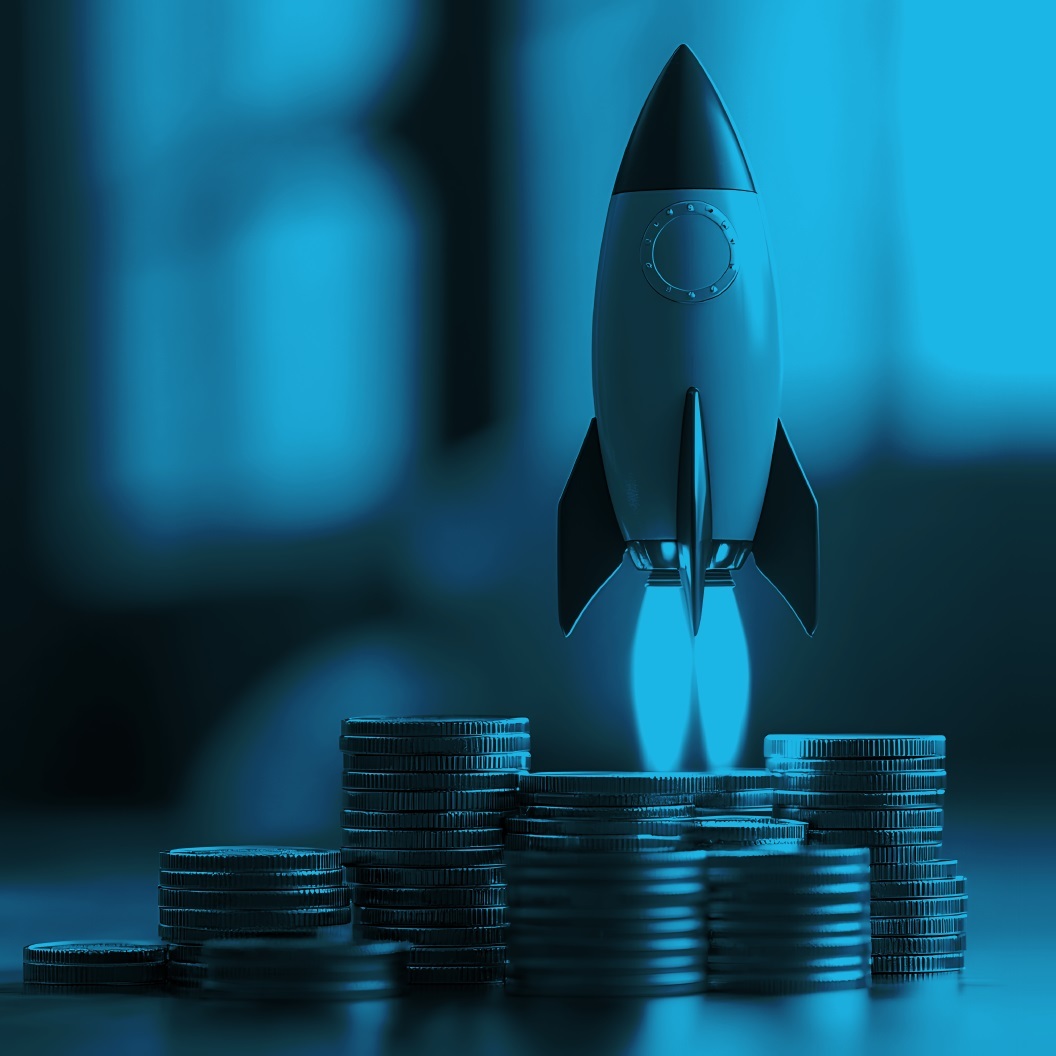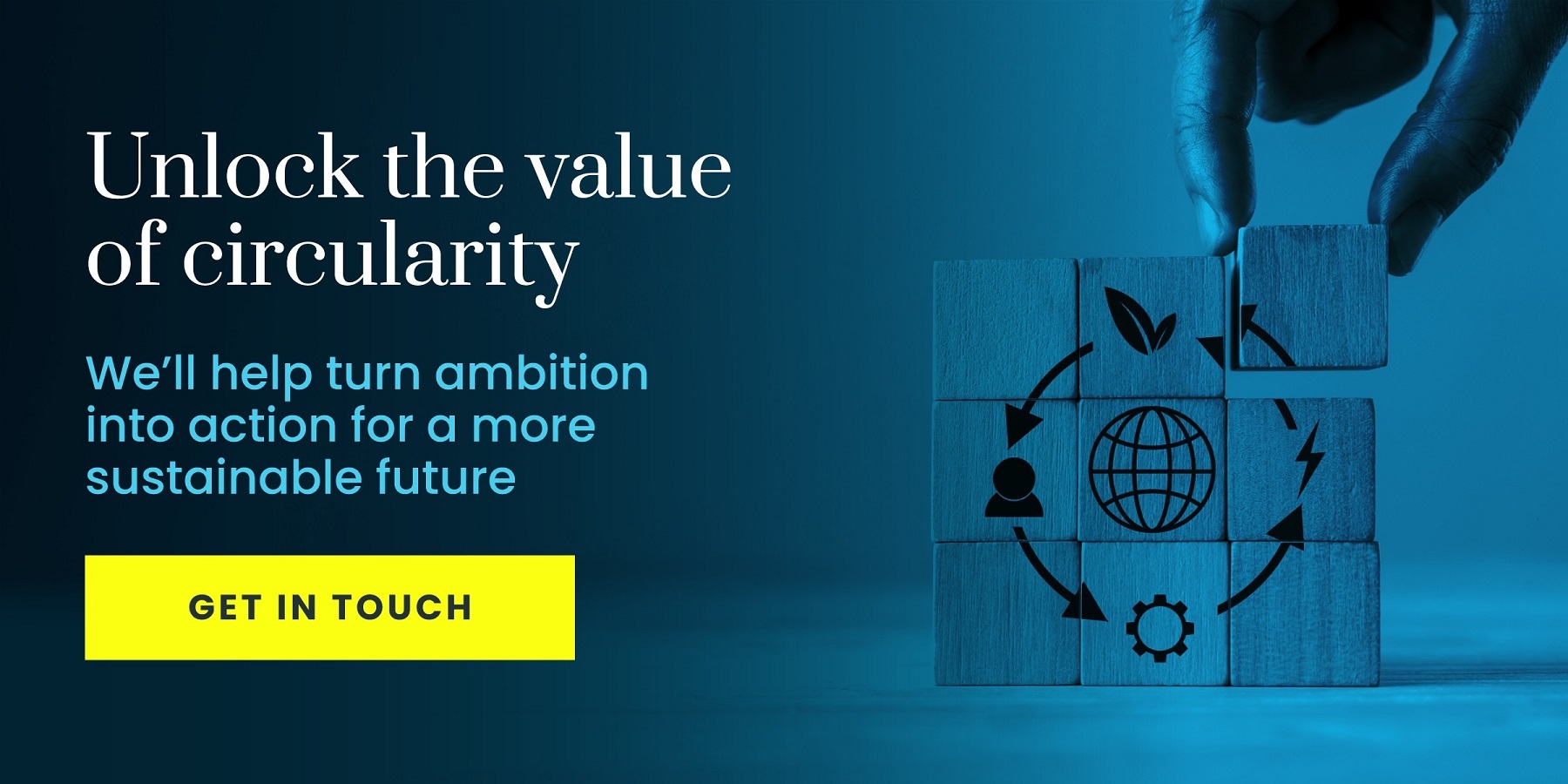From vision to value: How to unlock circular business model ROI
At recent sustainability events, such as the Economist Impact Sustainability Week in London and Go-Circular in Rotterdam, the focus on circularity has shifted from top-line promotion to bottom-line commerciality, says senior manager Michael Hallam.

The WHY of circularity no longer dominates conversations. There is broad consensus on the need to protect resources and reduce waste. Business leaders also recognise circularity's long-term benefits for competitiveness and resilience.
Now, the HOW is the priority for those who are driving the circular innovation agenda. Unpacking how to secure a return on investment. The commercial realities of circularity are hard to navigate.
New circular business models demand substantial upfront investment in technology, infrastructure, materials, and capabilities. In fact in a study by British Business Bank, 35% of executives cite capital expenditure as the biggest barrier to circular business model transitions.
This reinvention brings short-term risks. The uncomfortable truth is that circularity must happen, and businesses must evolve to secure their future. However, disrupting profitable, well-established linear models can feel like commercial suicide.
> CIRCUARITY IS POSSIBLE: A guide to help leaders discover how to unlock the next frontier
Progressing on the circular journey: 5 top tips to boost ROI
There is no one-size-fits-all approach for accelerating circularity. Every business will have its own context, reflective of their industry, the products and services they offer, and the stakeholders they work with.
That said, there are some common insights that provide useful direction for companies seeking to take a more circular approach:
1. Box clever: Search out soft openings to gain quicker wins
Start by scrutinising the entire value chain to find the biggest – and easiest – opportunities for circularity. For some companies, these may be upstream. Could materials be sourced from recycled stocks rather than raw? For others, the answers might lie downstream after the product has been used. Or it could be different junctures in between. With a focused and strategic process, the openings for circularity may become more obvious.
Learning from the successes (and setbacks) of competitors (or similar businesses in different sectors) can also provide inspiration for innovation. As a fast follower, rather than a circular pioneer or early adopter, it may be that businesses can hit the ground running.
It is essential to develop a good working understanding of the kinds of circular innovations already growing a customer base across your value chain. There are broadly four types of innovation that start-ups and larger companies are developing to remain competitive and resilient into the future: Anything-as-a-Service, Circular Marketplaces, Recovery Services and Enabling Services.
Which of these most readily lends itself to your commercial circumstances?

2. Now we’re talking: Change the conversation with different metrics
Return on investment traditionally implies commercial profit or financial growth. But that feels too limiting for circularity. The bigger picture in terms of environmental impact, reputational gain, stakeholder engagement and ESG compliance can spark a different kind of conversation about the benefits of circularity for the business.
Upfront, be clear on what constitutes a return on investment, making a deliberate effort to look beyond P&L. What value should the business place on keeping pace with regulatory change? How about customer loyalty and advocacy? Are there measurable returns on competitive differentiation or talent attraction?
It could be that the business needs to create an entirely new set of metrics that reveal the deeper effect of circularity. Measure alignment with ERP compliance, for example. Quantify the bearing on consumers through retention figures or brand perception scores. Gauge environmental impact with CO2 reduction or cost savings from resource efficiency.
3. More than the right thing: Align with customer need and benefits
“A more circular system must be no less convenient – and ideally more convenient – because consumers are busy. Consumers won’t pay a premium to do the right thing, so you need to make it a cost-neutral decision.” | Will Ghali, CEO of packaging compliances scheme Ecosurety.
Therefore, it’s important to do pre-emptive homework on whether current and potential customers will prove responsive to circular innovation. Have others tried your idea before? Is there a wider problem to solve, alongside ‘doing the same but greener’? The ultimate measure of success will be driven by genuine customer demand and strong sales performance, rather than media coverage.
The usual rules around innovation apply: any idea needs to offer something better at a price that feels worthwhile. Circularity doesn’t get a pass for being worthy alone. That’s not to say that customer-centric companies can’t lead on circularity. In fact, they will be better informed to meet future customer expectations, often before customers know their own minds.
4. Welcome failure: Apply commercial rigour early in the process...
Given the essential nature of circularity – and a desire to show progress as a company – there is a danger that flawed concepts will endure longer in development than standard protocol would allow.
Let numbers be the guide as early in the process as possible. Challenge ideas rigorously and seek out vulnerabilities dispassionately. Set strict constraints with yes/no gateways based on desirability, viability and feasibility scoring – as for any new proposition development.
Does the idea need to be mothballed – or could it find a route to profitability with the right iterations. How long would that take and what investment is required to get it over the line?
Circularity is inherently uplifting – but development teams should resist optimism bias clouding their better judgment. Besides, if the company invests significant amounts of time and money into a project that is ultimately doomed, then there will be less appetite and budget to back a more likely contender.
Celebrate every small No, as it brings the big Yes closer. Also, the learnings from smaller pilots and trials provide valuable proof points to expand and replicate larger in other areas of the business.
5. …but stay patient on ROI. Agree realistic resource and timings
There are times when circularity deserves double standards. While it’s important to cut ruthlessly at the early stages of proposition development; those concepts that advance beyond the DVF gateways and gather traction need to be properly nurtured.
ROI can take longer to come by, as circularity is bringing a more fundamental change for the business. Placing the same expectations on circular innovation as other innovation that sits within the existing linear model is therefore an unfair comparison.
By working with stakeholders to create a new set of expectations, companies on a circular trajectory can find the breathing room that is needed for a longer-term, more fundamental transition.
Similarly, the business should ensure it has the right resource and capabilities to focus on making a success of circular initiatives. A ‘spare-time’ pilot will soon become a side show that’s eventually consumed into innovation business-as-usual – or waylaid in Room 101.
Circularity really is possible
The challenges around securing ROI from circularity were evident in speaking to those who are banging its drum in their business. However, there was also plenty of conviction that circularity is gathering momentum now and will become the norm. Companies looking to create new circular models should keep in perspective that breakthroughs will happen. Here are two examples:
Decathlon - Sport & Leisure retailer
From our conversations with them, we learnt that they have done a very impressive job at integrating circularity into their business. Already, approximately 2.7% of the company's overall sales is driven through circular initiatives.
The company repairs and refurbishes items such as bicycles, tents, fitness equipment, skis, and kayaks, ensuring they remain in use for longer. Through its second life programme, Decathlon resells returned, refurbished, or slightly damaged products at a reduced price, making sustainability more accessible to customers. Additionally, its rental services for camping gear, bikes, and outdoor sports equipment further promote reuse and reduce waste.
Royal Mint – the UK’s official maker of British coins
At the Economist Sustainability Conference, they explained the urgent need to fundamentally pivot their business model due to declining coin demand.
Now, they focus on recovering precious metals from novel sources such as gold from e-wasteand silver from x-ray films, which is then crafted into stylish jewellery. They have successfully leveraged their expertise in metals and refining to shift from a declining cash-based industry into a profitable, sustainability-driven circular business model.
Moving forward
Businesses that are getting circularity right appreciate it is a long-term strategic imperative. They are investing in it accordingly. And they are being smart in how they choose which models to drive, and the criteria they judge success against.
Cognosis Consulting are working with organisations who are investing in creating new circular models. The businesses are at varying stages of their circularity journey. But there is one common theme – achieving circularity is not straightforward.


